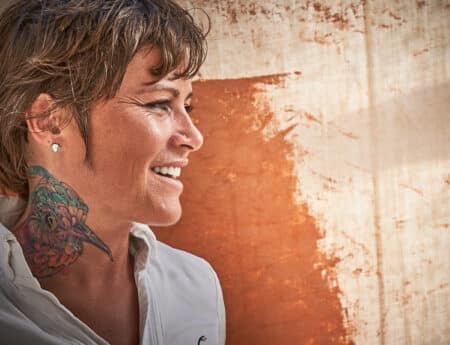The gap between men and women in health, education, economic opportunity and political representation has closed by 4% in the past 10 years according to the World Economic Forum’s Gender Gap Report 2015 released today. A slow pace says Yasmina Bekhouche from the World Economic Forum Gender team.
What are the main areas of improvements globally in this year report on Gender Gap?
Yasmina Bekhouche: Political empowerment, the fourth pillar measured by the Global Gender Gap Index, is the widest gap (23% of the gender gap currently closed) but is also the pillar which has improved the most compared to 2006. It went up by 9% from 14% in 2006. Changes on this pillar can be very fast as two of the three indicators are the percentage of women in parliament and in ministerial positions.
In terms of gender pay gap worldwide, have we improved?
Yasmina Bekhouche: The Economic gender gap has closed by only 3% with progress towards wage equality stalling markedly since 2009/2010. The female to male ratio on the Estimated earned income indicator has improved compared to 2006. However women are only now earning what men did a decade ago. Regarding the Perceived wage equality for similar work, this has actually slightly decreased over the past 10 years.
What are the regions or countries where the progress on gender gap has been significant?
Yasmina Bekhouche: Compared to 10 years ago, the region which has made the biggest absolute progress is the Latin America and the Caribbean region. The countries with the biggest progress on the overall Index, compared to 2006 are: Nicaragua, Bolivia, Nepal, Slovenia and France. Nicaragua for example, has made great improvements in both the Economic and Political pillars, highlighting the importance to tackle gender parity in a holistic way.
Education seems to be the major area of progress with more women educated than men, is the impact globally positive?
Yasmina Bekhouche: Overall, the Educational gender gap now stands at 95%. This is an improvement on the 92% where it stood in 2006. Worldwide, 25 countries have now closed their gender gap entirely, with the most progress having been made in university education, where women now make up the majority of students in nearly 100 countries. But progress has not been universal, with 22% of all countries measured continuously over the past ten years seeing an actual widening of the gap between men and women when it comes to education.
What is still preventing a global narrowing of the gender gap?
Yasmina Bekhouche: The Global Gender Gap is narrowing – it has closed 4% in the past 10 years – but the pace of change is slow. Of the 109 countries that have been continuously covered in the report over the last ten years, 103 have narrowed their gender gaps, but another six have seen prospects for women deteriorate.
The problems are many and varied. In some countries, women are still facing barriers regarding basic education and access to adequate health care. In others, problems include a lack of child care provisions and low participation in the political process.
Continuous focus on closing the gender gap need to take place, especially as it takes time to see the benefits of most policies put in place to reduce gender gaps.
In some countries, the situation of women have deteriorate, which are they and why so?
Yasmina Bekhouche: The country which presents the biggest overall score decrease over the past 10 years is Sri Lanka. This is mainly due to a fall in the Political Empowerment pillar. Next is Jordan which has seen an important decrease in its Economic Participation and Opportunity pillar compared to 2006. The third biggest decrease comes from Croatia. This is also due to a decrease in the Political Empowerment pillar.
What are the winners of the report?
Yasmina Bekhouche: The countries which have improved the most over the past 10 years on our four pillars are: Bahrain for the Economic Participation and Opportunity pillar, Burkina Faso for the Educational Attainment pillar, Georgia for the Health and Survival pillar and Bolivia for the Political Empowerment pillar.
The Economic gender gap has closed by only 3% with progress towards wage equality stalling markedly since 2009/2010. The female to male ratio on the Estimated earned income indicator has improved compared to 2006. However women are only now earning what men did a decade ago. Regarding the Perceived wage equality for similar work, this has actually slightly decreased over the past 10 years.
*Yasmina Bekhouche is Project Manager on the World Economic Forum’s Gender Parity Team.










